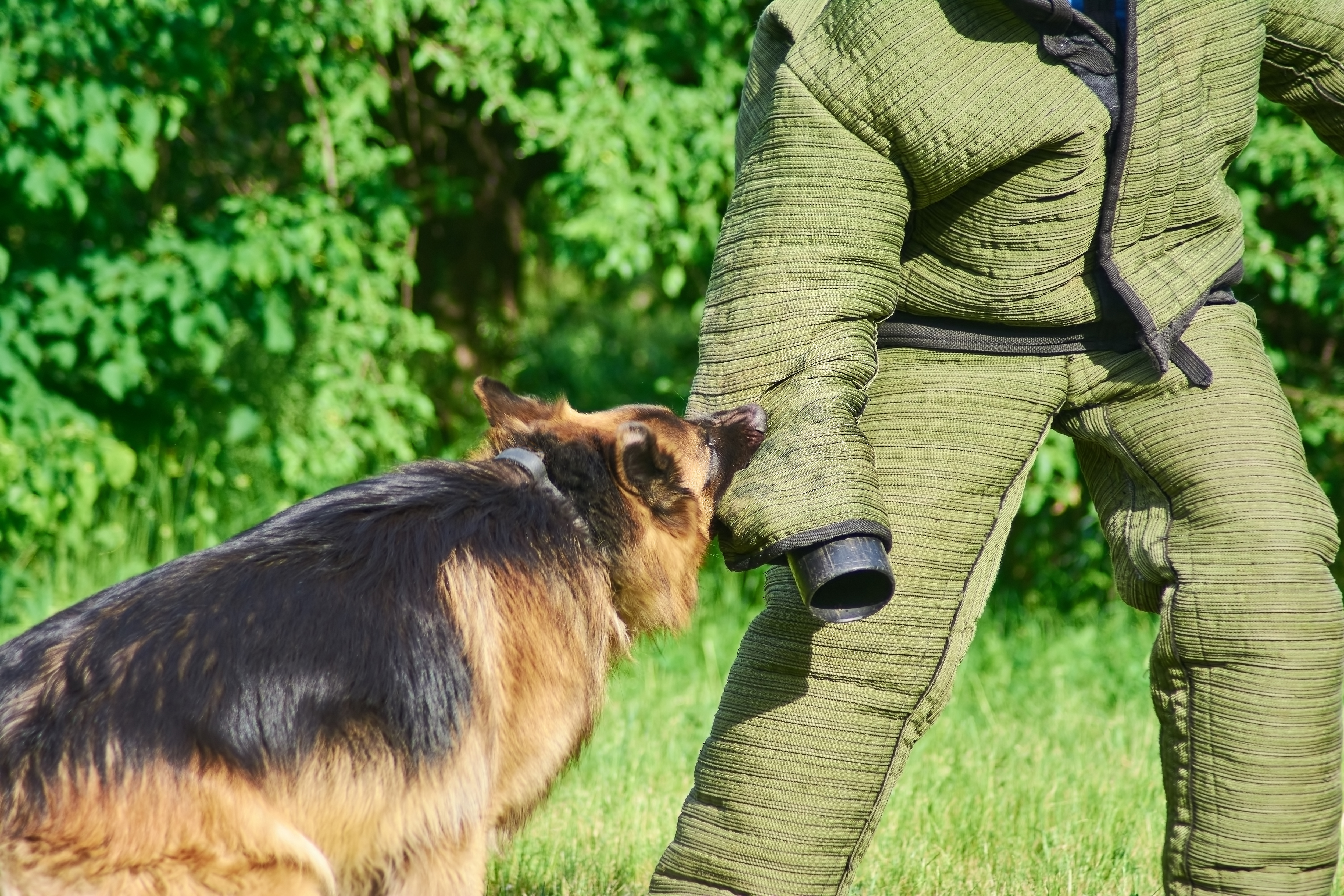

West Texas
Dog Bite Attorneys
Malone Legal Group are top-rated dog bite injury attorney in West Texas and surrounding areas. Our lawyers at Malone Legal Group have extensive knowledge of the laws that govern dog bite cases. They can help you determine how to proceed when an unfortunate accident occurs. We fully dedicate ourselves and our resources to help you fight for a fair and just settlement.
With over 65.1 million dogs owned as pets in the U.S., dog bites are prevalent. Over 4.5 million people are bitten by dogs annually, and 20% of those bitten require medical attention. Unfortunately, children and seniors are most likely to be severely injured by a dog bite.
If a dog bit you, in public, or while lawfully in a private place, Texas law states the owner of the dog is liable for damages suffered. It does not matter if the dog had not bitten anyone prior, was on a leash, or if the owner tried to restrain the dog. Often victims avoid filing a lawsuit because the owner of the dog is a friend or relative. Remember that even if the dog bite occurred at a relative’s home, the insurance carrier usually pays for a settlement instead of the actual dog owner.
DOG BITE STATISTICS
Dog bites can lead to various injuries, and the statistics regarding dog bite injuries can vary by region and over time.
1. Prevalence: According to the Centers for Disease Control and Prevention (CDC), millions of people in the U.S. are bitten by dogs each year. In 2019, for example, there were an estimated 4.5 million dog bites in the United States.
2. Hospitalizations: Dog bites can range from minor injuries to severe attacks requiring hospitalization. On average, around 800,000 people annually seek medical attention for dog bites in the U.S. Of these, approximately 386,000 require emergency room treatment.
3. Fatalities: On average, there are around 30 to 50 dog bite-related deaths in the United States each year. Children and the elderly are more vulnerable to severe injuries.
4. Children: Children are often more susceptible to dog bites due to their size and behavior. Around half of all dog bite victims are children.
5. Infection Risk: Dog bites can lead to infection, particularly if the wound is not promptly and properly cleaned. Infection rates vary, but it's estimated that approximately 18% of dog bites become infected.
6. Breed-Specific Data: Certain dog breeds are often associated with more severe bites, but it's essential to note that individual dog behavior and owner responsibility play significant roles in these incidents.
If you're interested in the most up-to-date statistics on dog bite injuries, we recommend checking with reputable sources like the CDC, the American Veterinary Medical Association (AVMA), or local health departments, as they may have more recent data and insights on this topic.
DETERMINING LIABILITY IN A DOG BITE CASE
Determining liability in a dog bite case typically involves examining the circumstances surrounding the incident and relevant laws in the jurisdiction where it occurred. In Texas, liability for a dog bite generally falls under the state's "one bite rule" and statutes governing negligence. Here's how liability may be determined:
- Strict Liability: In some states, including Texas, there is a "strict liability" standard for dog bites. This means that a dog owner is held responsible for any injuries caused by their dog, regardless of whether the owner knew the dog was dangerous or had a history of aggression. Under Texas law, a dog owner may be held liable if their dog injures someone who is legally allowed to be on the property where the bite occurred (whether it's public property or private property they were invited to).
- One Bite Rule: Texas also follows the "one bite rule," which means that a dog owner may be held liable if they knew or should have known that their dog had dangerous propensities or had bitten someone before. If the owner was aware of the dog's aggressive behavior or tendencies and failed to take reasonable steps to prevent future incidents, they may be held liable for any subsequent bites.
- Negligence: Even if the dog has not previously bitten anyone and the owner was not aware of any aggressive tendencies, liability may still be established if the owner was negligent in controlling the dog or preventing the bite. For example, if the owner allowed the dog to roam freely in an area where it posed a risk to others or failed to properly restrain the dog in public, they may be found negligent.
- Trespassing Defense: In Texas, if the person who was bitten was trespassing or unlawfully on the owner's property at the time of the incident, the owner may have a defense against liability. However, this defense may not apply if the victim was legally on public property or was lawfully on the owner's property.
Determining liability in a dog bite case can be complex and may require a thorough investigation of the facts and circumstances surrounding the incident. Consulting with a personal injury attorney experienced in handling dog bite cases can provide valuable guidance and assistance in pursuing a claim for compensation.
DOG BITE OWNERSHIP RESPONSIBILITY IN TEXAS
Lots of states have rules about what dog owners need to do to take care of their dogs. These rules can be different depending on where you live. Some places might say that owners have to put leashes or muzzles on their dogs when they're outside in public.
In other areas, owners might need to make sure their property is fenced off if they have a dog, or they might have to put up signs warning people about the dog. If your state has these kinds of rules, the owner could be responsible if their dog bites someone.
It's important to check the laws in your state and local area to know exactly what dog owners are supposed to do.
If you or someone you know has been bitten by a dog in Texas, it's important to take several steps to ensure proper care and legal measures are taken:
• Seek Medical Attention: The first priority is to assess the severity of the bite and seek medical attention if necessary. Even seemingly minor bites can lead to infections, so it's crucial to have a medical professional evaluate the wound.
• Report the Incident: Report the dog bite to the local animal control authorities or police department. They will document the incident and may take further action, such as quarantining the dog if it's suspected of having rabies.
• Exchange Information: If possible, exchange contact information with the dog's owner or the person responsible for the dog at the time of the incident. This information may be useful for legal purposes or insurance claims.
• Document the Incident: Take photographs of the injury and the location where the incident occurred. Documenting the scene can be helpful if legal action becomes necessary.
• Follow Up with Medical Treatment: Follow any instructions given by medical professionals for treating the wound and preventing infection. This may include taking antibiotics or receiving a tetanus shot.
• Consider Legal Action: Depending on the circumstances of the dog bite, you may want to consider seeking legal advice.
• Know the Statute of Limitations: If you're considering legal action, be aware of the statute of limitations for filing a personal injury claim in Texas.
Usually, if a dog bites you, the first person you might consider suing is the dog's owner. They could be responsible for the bite, especially if they were careless and didn't control their dog properly. For instance, if they didn't follow the leash laws in your area, they might be at fault. Also, if the dog has bitten someone before, the owner might still be responsible for any new bites.
Additionally, if the dog bite happened on someone's property, like a homeowner's, you might also be able to sue them. Often, the homeowner's insurance can cover these kinds of claims. This insurance typically pays for injuries or damages caused by accidents on the homeowner's property, including dog bites.
• Puncture Wounds: Often caused by a dog's sharp teeth piercing the skin.
• Lacerations: Deep cuts or tears in the skin or flesh.
• Abrasions and Contusions: Surface scrapes or bruises often result from being knocked over or dragged by a dog.
• Nerve Damage: Resulting from deeper bites that can affect underlying nerves.
• Bone Fractures: Caused when the force of a bite breaks or fractures bones.
• Infections: Open wounds can become infected if not treated promptly or properly.
• Scarring and Disfigurement: Permanent marks or alterations to one's appearance from a bite.
• Emotional Trauma: The psychological impact of a dog attack, leading to fear or anxiety.
• Risk of Disease Transmission: Potential for diseases like rabies to be transmitted through a bite.
In Texas, the statue of limitation for filing a dog bite claim for personal injury claims, including dog bite cases, is two years from the date of the injury. This means that a victim has two years from the date of the dog bite to file a lawsuit against the responsible party. If the lawsuit is not filed within this time frame, the victim may lose the right to seek compensation through the courts.
In Texas, liability for dog bites is determined through a combination of the one bite rule and negligence-based principles. Here's a detailed breakdown of liability in Texas regarding dog bites:
One Bite Rule: Texas has traditionally followed the "one bite rule." This means a dog owner can be held liable for injuries caused by their dog if:
• The owner knew that the dog had bitten someone before or had a tendency to bite without being provoked; or
• The injury was caused by the negligence of the dog owner.
Importantly, the name "one bite rule" is somewhat misleading. The victim does not necessarily need to prove that the dog has bitten someone before; they need to prove that the owner was aware of the dog's aggressive tendencies.
Negligence: If the dog bite occurred because the owner was careless or failed to control their dog, the owner could be held liable under general negligence principles.
Strict Liability: In some cases, strict liability can apply. This means that even if the owner did everything they could to prevent the bite, they could still be held liable if they knew the dog was dangerous.
Landlord Liability: Under certain circumstances, landlords can be held liable for dog bites that occur on their property.
Defenses: Dog owners may have defenses available to them, like provocation. If someone provoked a dog into attacking, the owner might not be liable.
You may still be able to pursue a claim against the property owner, especially if they were negligent in allowing a dangerous dog on their premises or failed to warn visitors about the dog.
If you're pursuing a dog bite claim, whether in Texas or any other jurisdiction, gathering comprehensive evidence and documentation is crucial. These pieces of evidence can help prove the dog owner's liability, the severity of your injuries, and any other relevant circumstances surrounding the incident. Here's a general list of what you may need to provide for a dog bite claim:
Medical Records:
• Detailed records of medical treatments you received as a result of the bite.
• Photographs of your injuries both immediately after the bite and as they heal.
• Documentation of any future medical treatments or surgeries you may need due to the bite.
Witness Statements:
• Names, addresses, and contact information of any witnesses who saw the attack.
• Written statements from those witnesses about what they saw.
Dog Owner Information:
• The dog owner's name, address, and contact details.
• Any known history of the dog's aggressive behavior or previous biting incidents.
• Information about the dog, such as breed, size, age, and any identifying tags or microchip information.
Report of the Incident:
• A detailed written account of the attack from your perspective: where it happened, how it happened, and the events leading up to it.
• If available, a report from animal control or the police if they were called to the scene.
Proof of Loss:
Documentation of any financial losses due to the attack, such as missed work, medical bills, and any property that was damaged during the incident (like torn clothing or broken glasses).
Supporting Documentation:
• Any correspondence (letters, emails, texts) between you and the dog owner or their insurance company.
• Any local regulations or laws related to animal ownership and liability (some areas have breed-specific legislation or strict liability laws).
Photographs:
• Pictures of the location where the attack happened.
• Photos of any warning signs, fences, or lack thereof.
Insurance Information:
If the dog owner has homeowners or renters insurance, details of that policy could be relevant, as these often cover dog bite liabilities.
The statute of limitations for filing a dog bite claim varies by state, but it's typically within one to three years from the date of the incident. It's important to act promptly to preserve your legal rights.
The amount of compensation one can receive for a dog bite varies widely based on several factors. Here are some considerations that can influence the amount:
• Severity of the Injury: More severe injuries, such as those requiring surgery or resulting in permanent disfigurement or disability, will typically command higher compensation:
• Medical Expenses: This includes both immediate treatment costs and anticipated future medical bills, such as physical therapy, plastic surgery, or ongoing treatments:
• Lost Wages: If the victim misses work due to the injury or has a diminished earning capacity because of it, they can seek compensation for these losses:
• Pain and Suffering: This non-economic damage compensates victims for physical pain and emotional distress:
• Property Damage: If personal property (e.g., clothing, glasses) was damaged in the incident, its value can be included in the claim.
How Malone Legal Group
Can Help You With Your Dog Bite Case
Expert Evaluation: Malone Legal Group will assess the details of your case, advising you on its merits and potential outcomes. Contact us for a free consultation
Gather Evidence: We'll meticulously gather evidence, including medical records, witness testimonies, and photographs, to support your claim.
Determine Liability: Malone Legal Group will work to identify the responsible parties, whether it's the dog's owner, a property owner, or another entity.
Negotiate with Insurance Companies: Experienced lawyers from the firm will negotiate with the dog owner's insurance company to ensure you receive a fair settlement.
Litigation: If a fair settlement isn't reached, the firm is prepared to take your case to court to seek the compensation you deserve.
Stay Updated: Malone Legal Group will keep you informed about the progress of your case, ensuring you're involved in every decision.


